Few clubhouses have the presence of St George's Hill. Like the logo, the clubhouse strikes me as a bit ott, but it is very comfortable and provides a great viewing point for the 1st, 9th & 10th tees, plus the 9th & 18th greens.
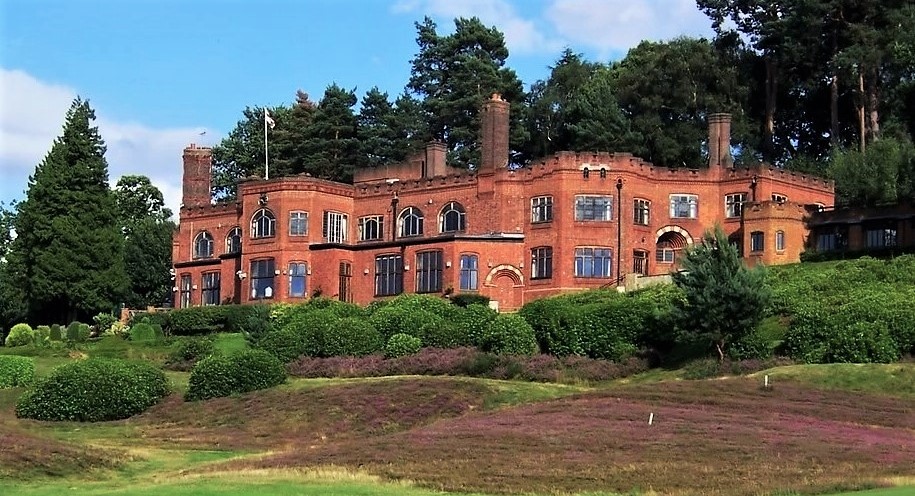

St Georges Hill may best be known in history by its association with the Diggers. During the turbulent period shortly after the trial and execution of King Charles I, a group led by Gerrard Winstanley occupied the common land known as St Georges Hill with a view to cultivating it. This radical solution to rising food prices and a general feeling of disconnect with the land among the lower classes would 200 years later be labeled Communism. How ironic then that St Georges Hill should eventually become one of the wealthiest gated communities in England.
In 1911 the concept of a gated community was relatively novel and appealed to the then well established middle classes made up of professionals and entrepreneurs. It is the great fortune of golfers that the developer, George Tarrant (he also developed Wentworth), decided to include a golf course on the Surrey estate. A well known figure in the Arts & Crafts movement, Tarrant is also associated with Hook Heath, the estate near Woking GC. He designed a few houses prior to the St George's Hill development. Interestingly, after a well publized 1924 match between Hagen/Smith and Duncan/Mitchell Mr Tarrant came up with idea of a providing a trophy for an annual match between between professionals from the USA and England. The St Georges committee turned the idea down thus leaving the door open for Wentworth to carry the idea forward. One of the spectators of the Wentworth Match was Samuel Ryder. Ryder thought the match should be staged again (no doubt encouraged by two English victories) and thus the Ryder Cup was born in 1927, being first played at Worcester CC in Massachusetts.
After many months of arduous tree-clearing Harry Colt was able to embark on what is arguably his finest inland creation. The course covers land which is most obviously severe even when viewed from the comfort of the rather redoubtable clubhouse. However, the undulating terrain is used to great effect in offering challenge and beauty. True to Colt, many of the holes play to somewhat large uphill greens situated on plateaux and well guarded by sand. Colt is rightly famous for his par 3s, but I think the strength of St Georges Hill rests with its two-shotters. The diversity of these holes sets the standard for Colt and perhaps for all of the great architects of the Golden Age.
One of the aspects of St Georges Hill which impresses me the most is its width. Oddly enough, perhaps #1 is the most confined hole on the course! One will note the up and down nature of the opener, this is a common theme throughout.
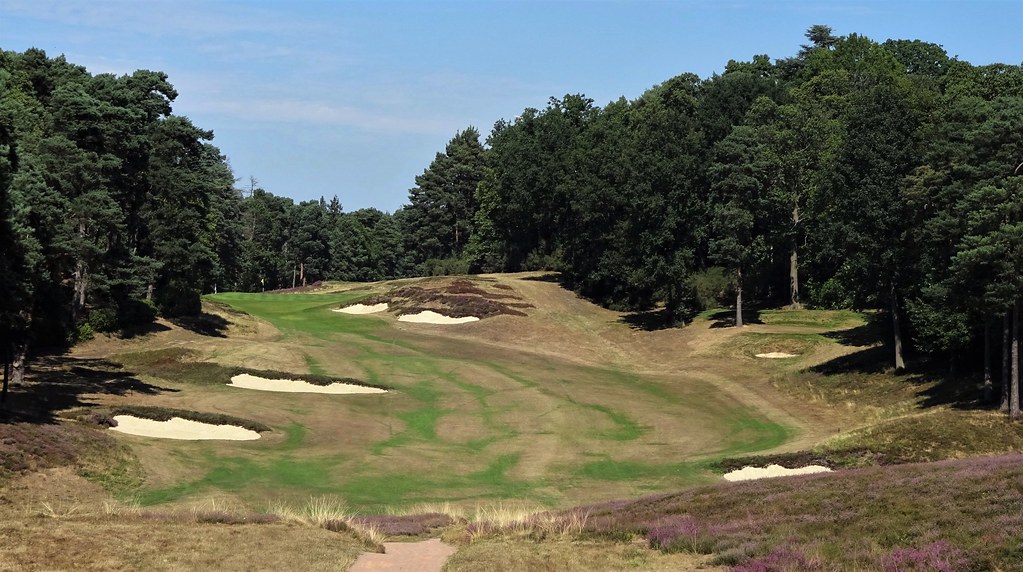
The far right bunker looks out of sorts. It is a remnant of when the green was further right.
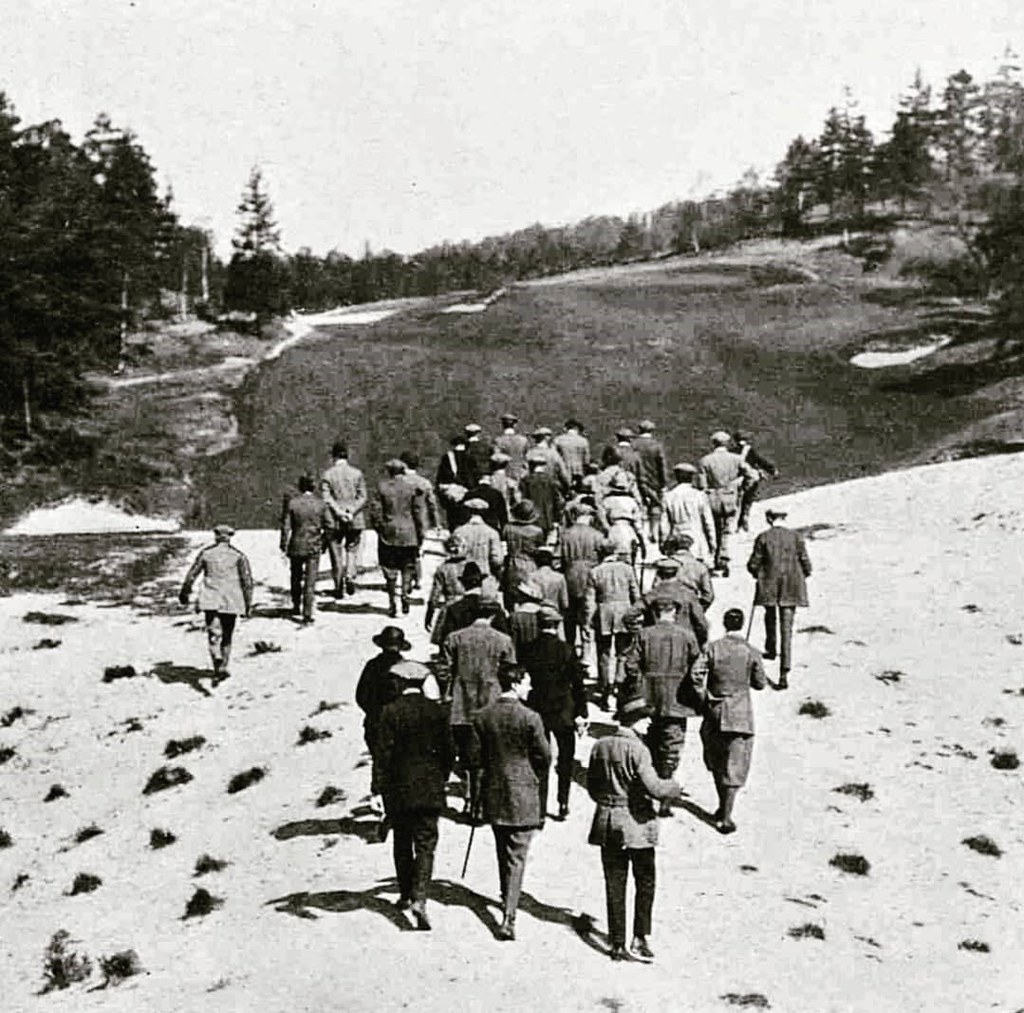
Like most good uphill approaches, the shot here leaves the player in some doubt as to where the edge of the green is; in this case, the left side. This doubt makes it difficult to be aggressive with left side hole locations.
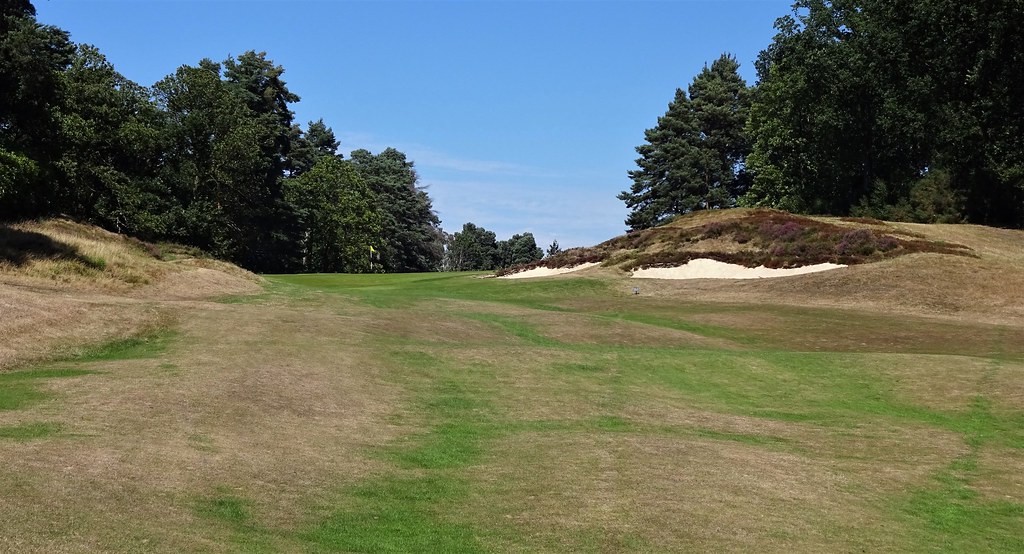
But there is more room for error than it appears.
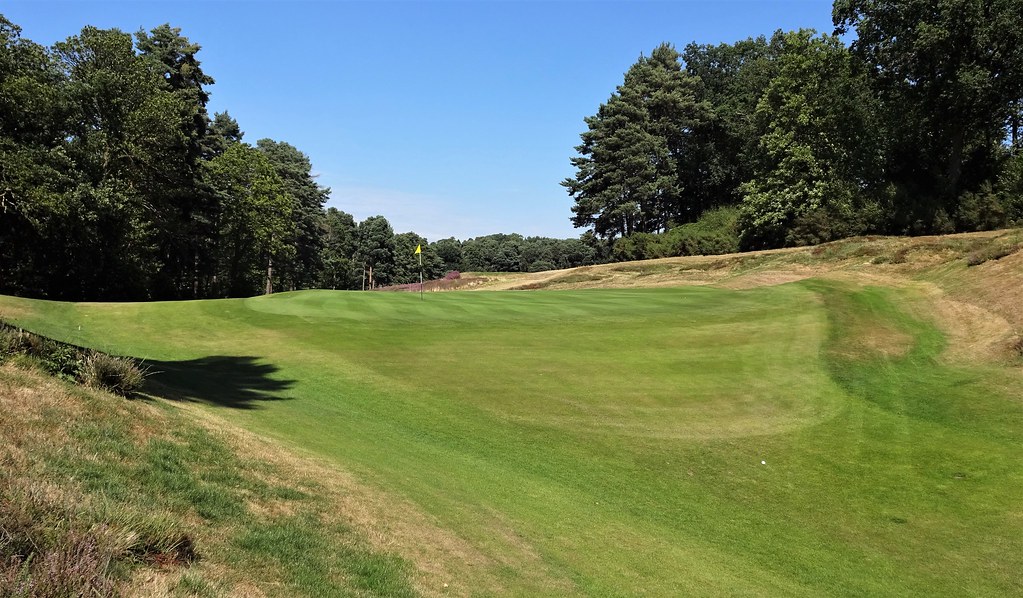
The second takes the player blindly over a brow with a ditch some 300 yards out. Below is a look at the hole from a forward location.
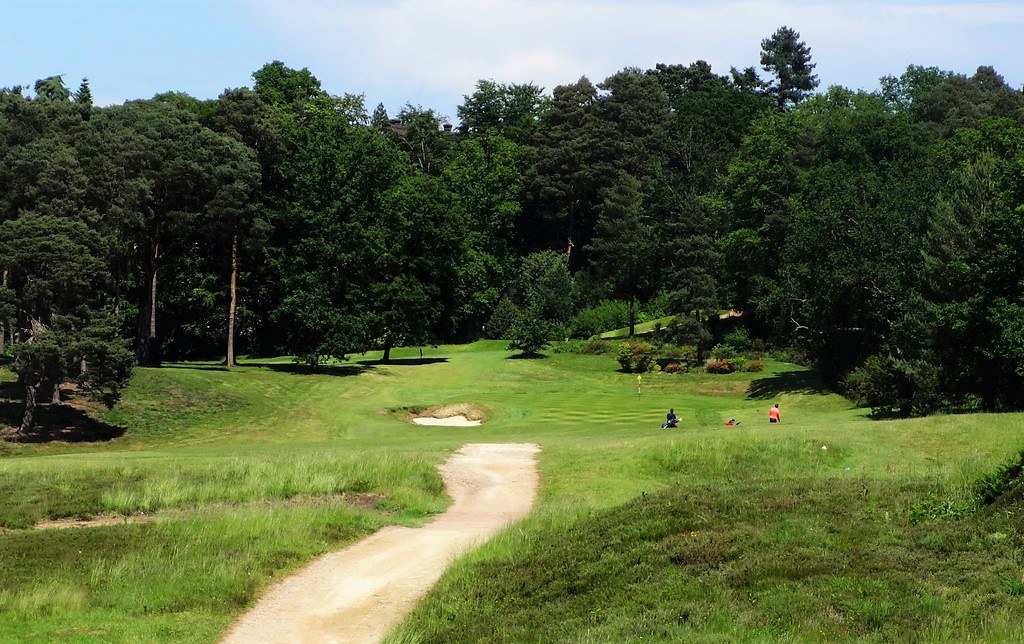
The approach.

A tricky two tier green short hole, the most difficult hole location to access is on the right, but once on the 3rd green the more challenging putting will be down the tiers to the left side of the green. The bunkering was recently altered as there is now one large bunker on the left rather than two smaller ones.
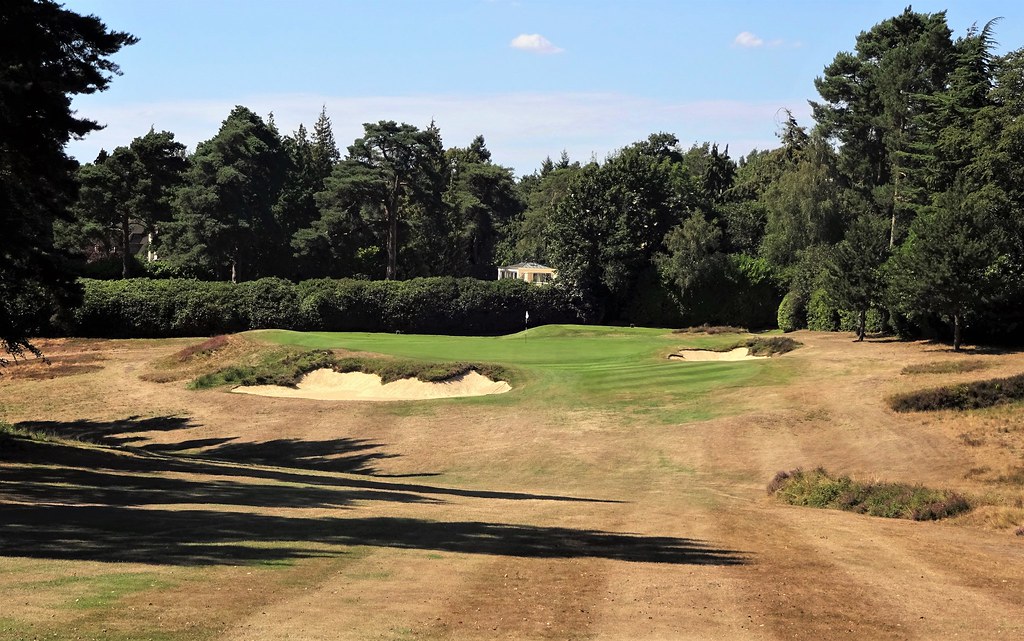
The 4th stands out as the awkward hole at St Georges Hill. The hole may be more interesting from the ladies tees at ~245 yards. The yardage is often not enough for driver, but still requires at least a 220 yard carry if one is going for the green. The apron is very deceiving as it is steeply uphill.
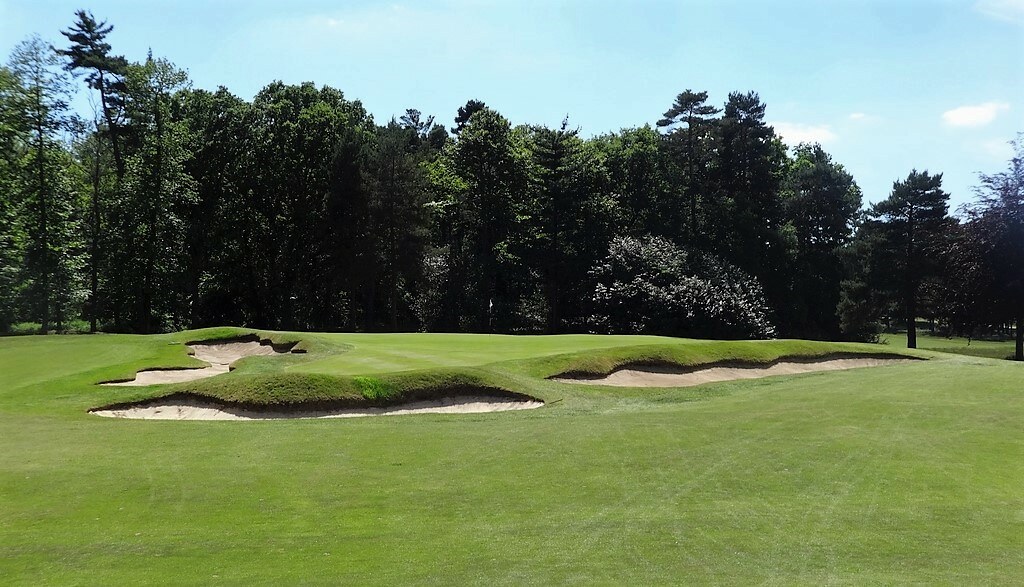
An old photo of the 4th.

#5 is an awkward length as well because of the cross bunker. The seemless transition from fairway to green makes this uphill approach much more tricky than first glance suggests.
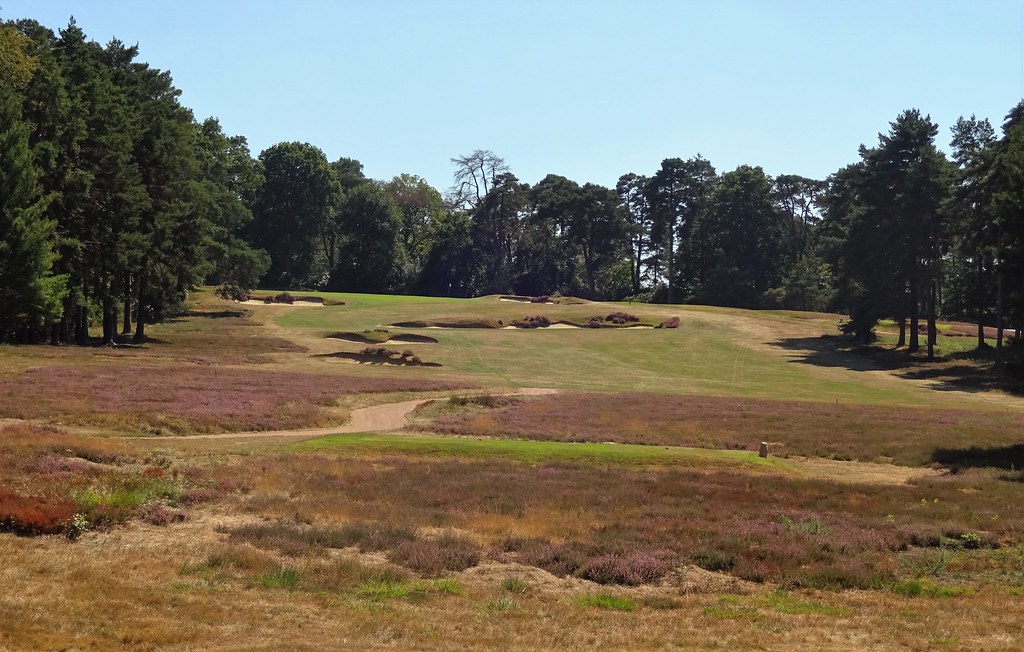
An odd shaped hole, the 6th fairway protrudes well right.
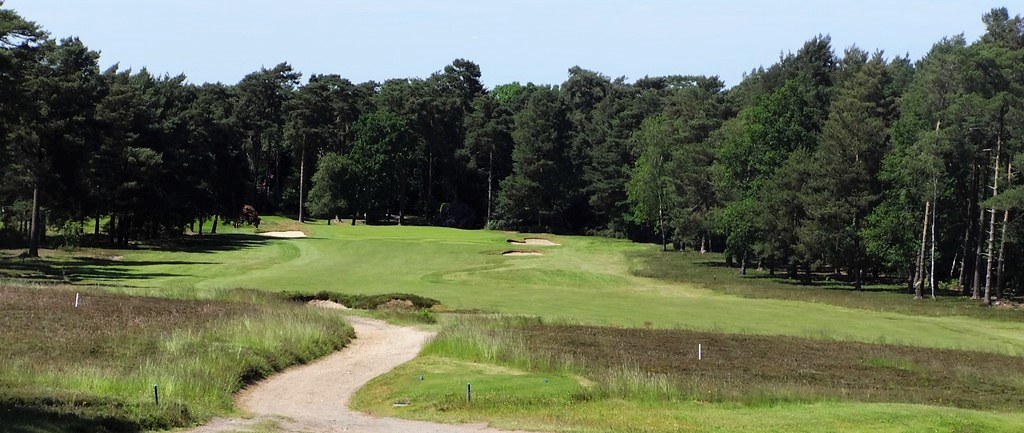
The recent bunker work has made the bunkering scheme better aligned with the texture of the property. The course now feels more of a heathland than previously. The bunker below is fed by the surrounding land. It is also clear that one can draw a rather unpleasant heathery lie just outside the hazard.
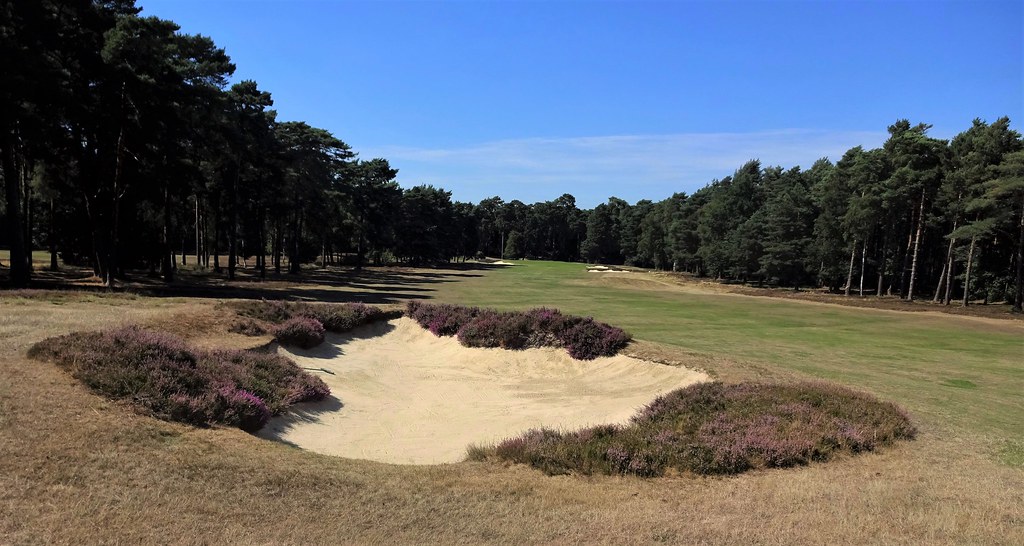
There is a sleek swale shy of the green which visually forshortens the hole. Playing downhill as well, it is wise to take one club less than the yardage suggests, but many take one more....
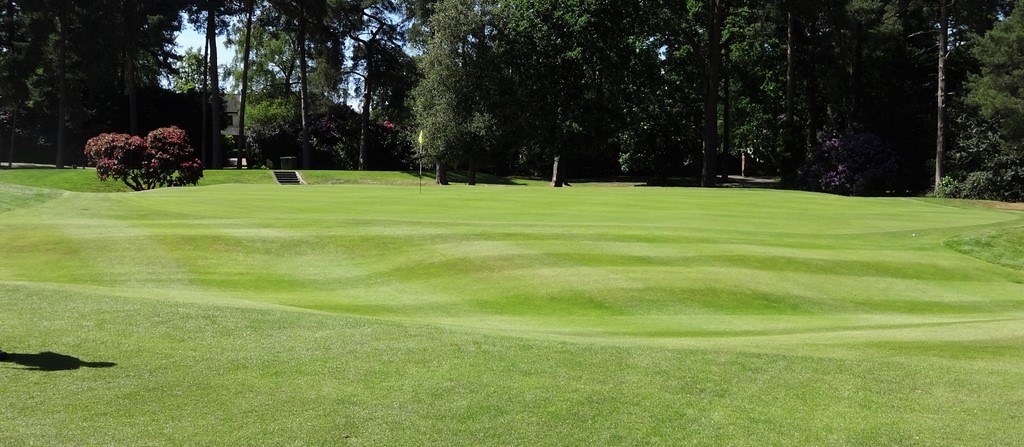
A very short par 5, one can have a mid iron to the 7th green. This seems to be the one hole which doesn't quite settle with me. Next is the stunning 8th. Though it must be said that once one sees photos of the old bunkering compared to the current disjointed effort, it must bring a tear to the eyes of Colt fans. Let us hope the club restores this hole to its Colt heritage which should include restoring the lower right green which may not have survived for the opening of the course! Many greens were altered in the 1920s. In fact, I believe all the greens were altered around the same time, sometimes to soften the slopes and contours. Interesting fact, Ringo Star used to live in a house called Sunny Heights to the right of the 8th.


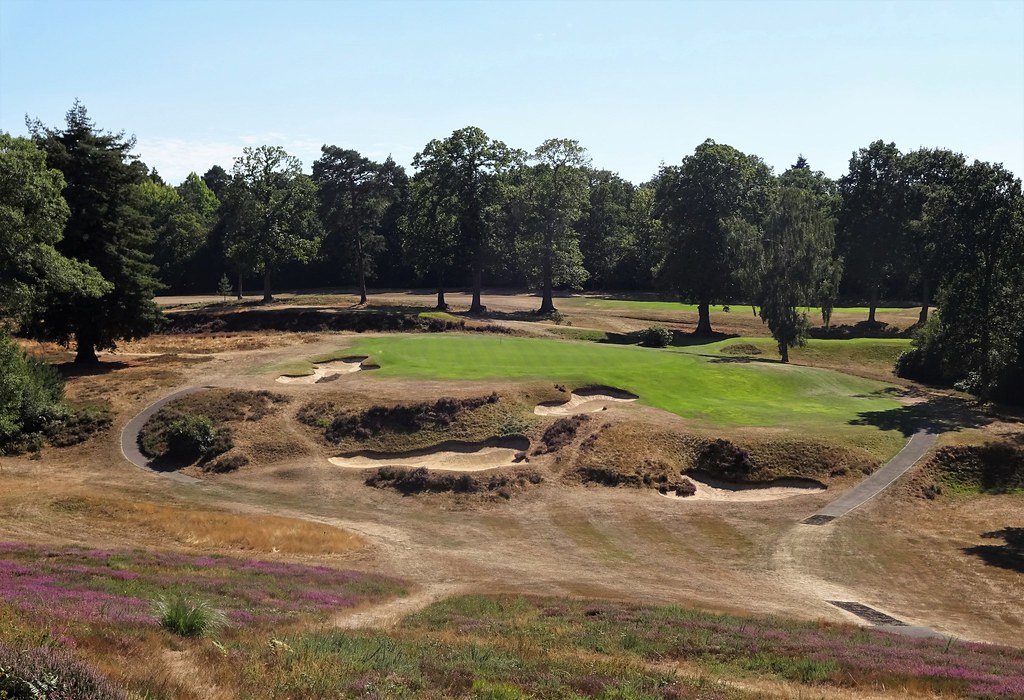
The course is chocker block full of plateaux greens and knob to knob shots. On a few occasions, the greens are turtle backed.

The somewhat blind 9th swings hard left and uphill to a green which runs treacherously left. That said, the grade of the green was recently reduced to accommodate left hole locations which bring the knob into play.
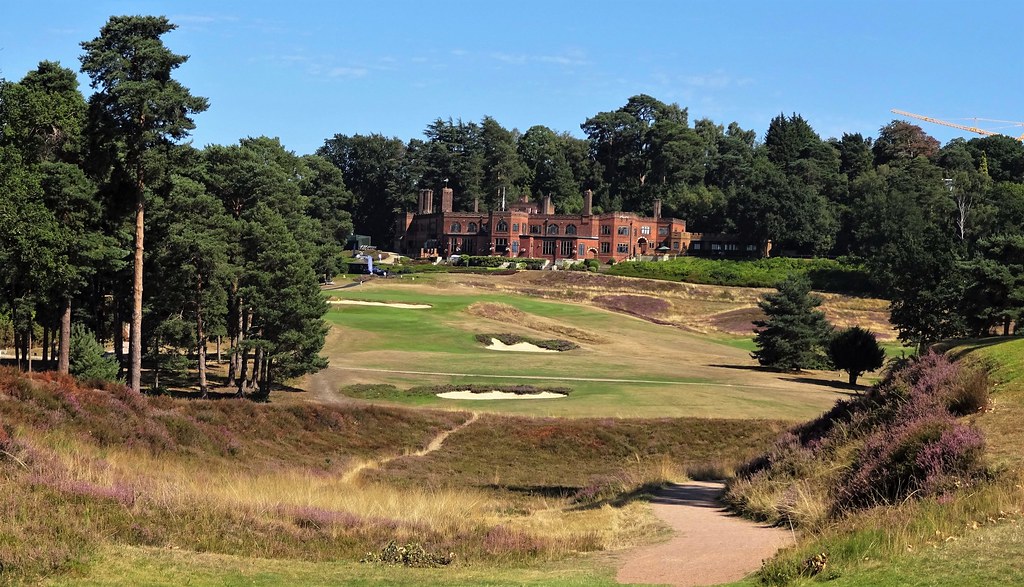
Back in the day.
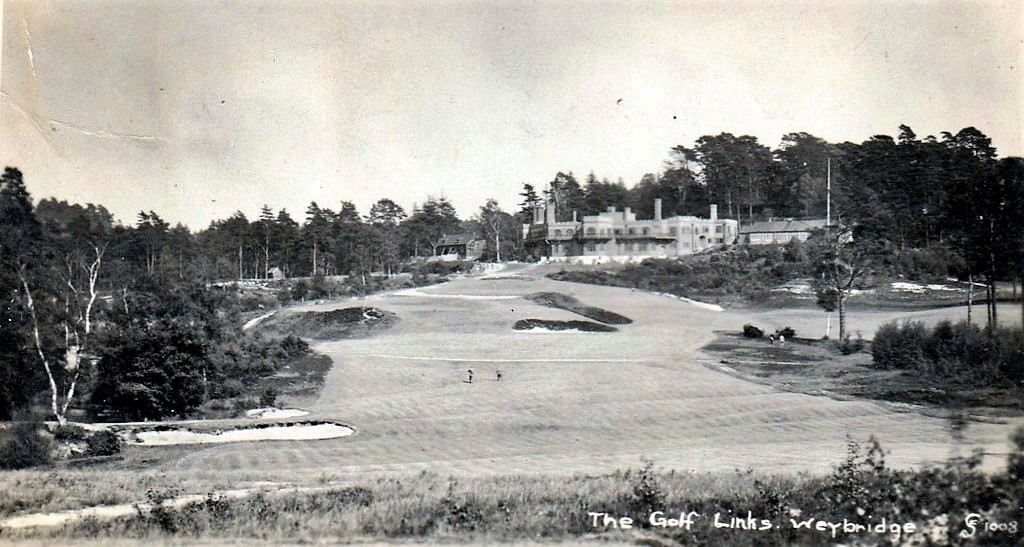
The approach.
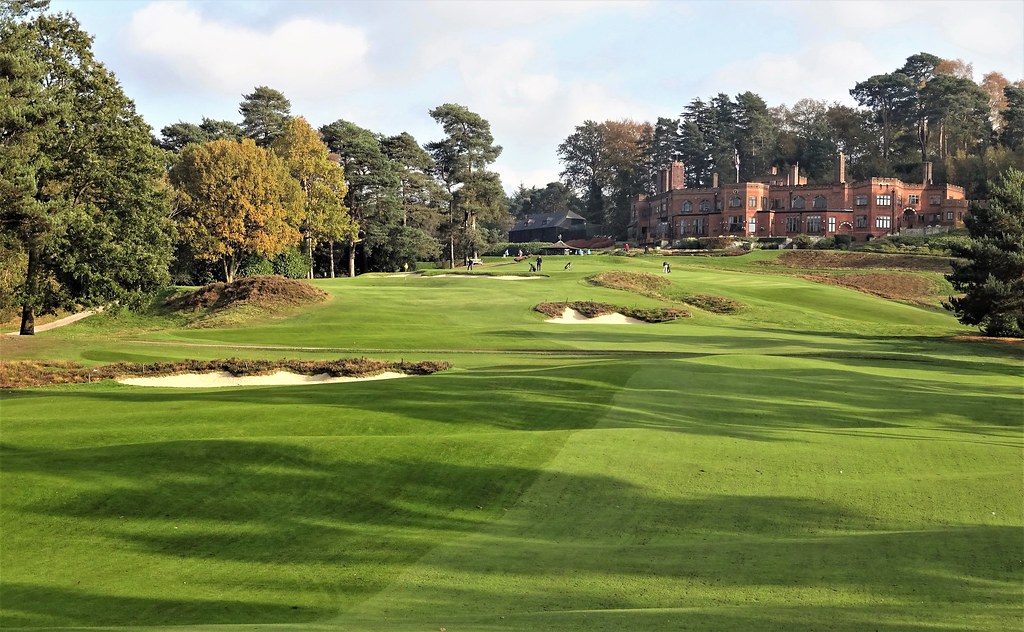

The back nine commences in stunning fashion with a blind longish two-shotter over the brow of a hill. The hole feels like a dogleg left, but actually plays like a dogleg right because of the severe terrain. The large green dictates the approach. If the hole is left behind the mound then far right is the ideal driving line. Otherwise, down the middle works. Anything less than a superb approach leaves the golfer in three putt territory. A clever mirror system offers a view of the golfers ahead.
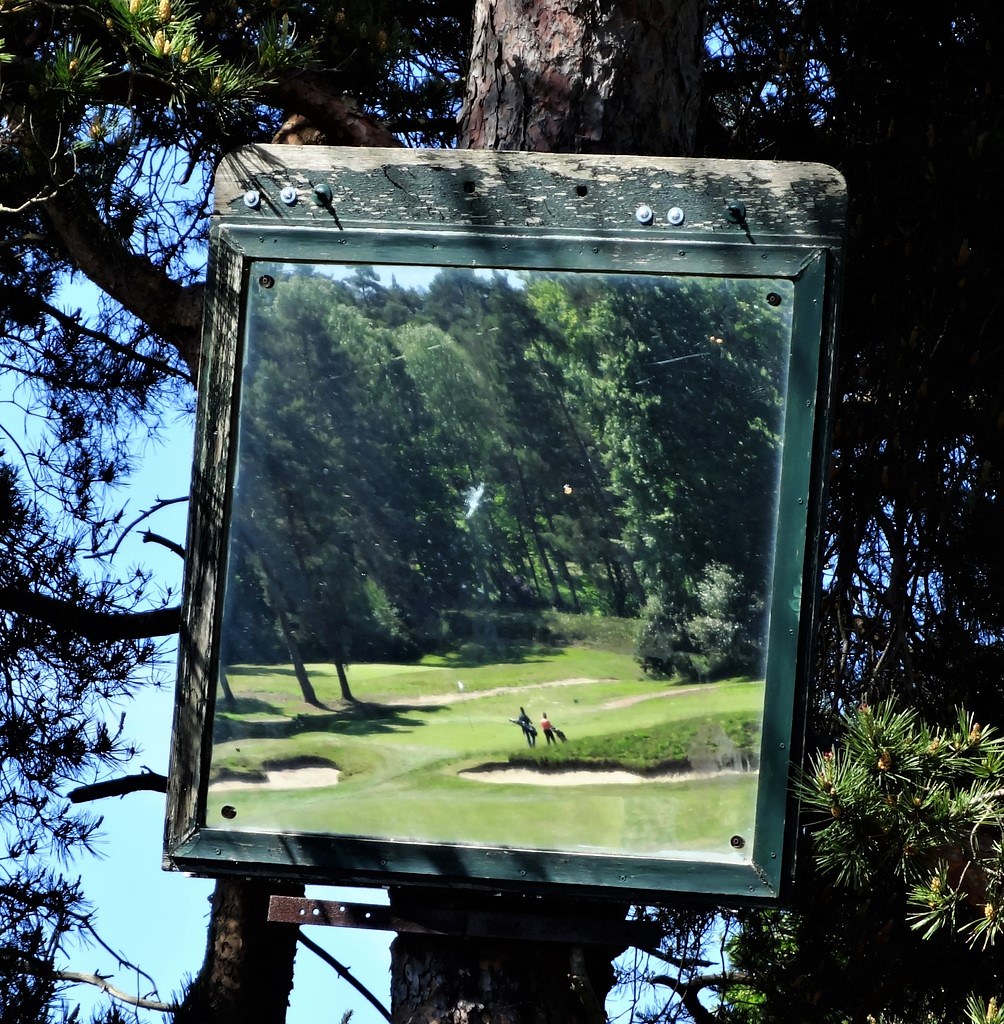
What remains after a very good drive.
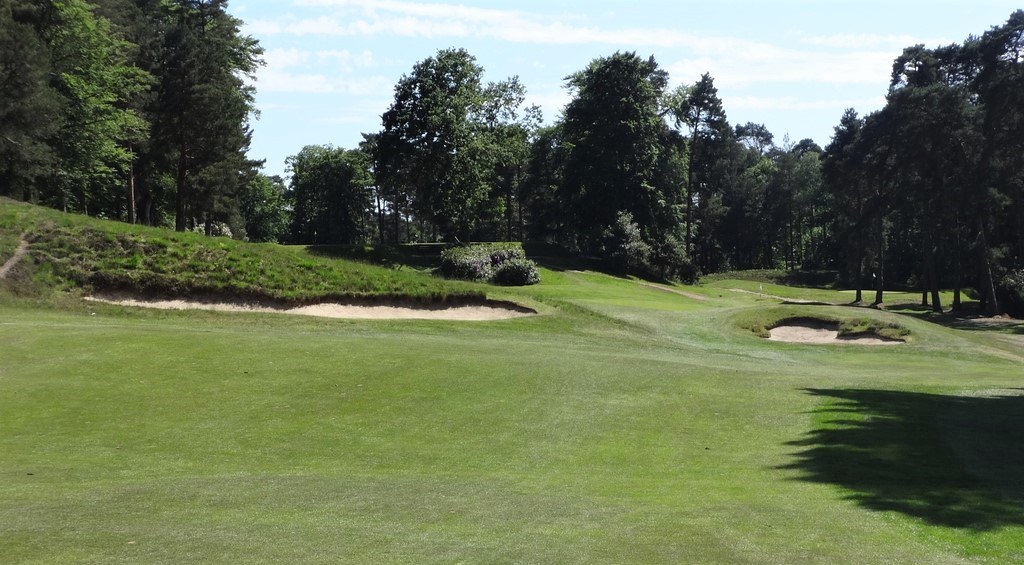
The 10th is a very good green amongst an engaging if not overly aggressive set of putting surfaces. It is a great shame some of the greens were softened over time, sometimes by Colt himself. With the exception of Woking, the London heathland greens are open to criticism for their leaning toward the bland when compared with similarly highly respected courses in the US. Looking back to the tee.
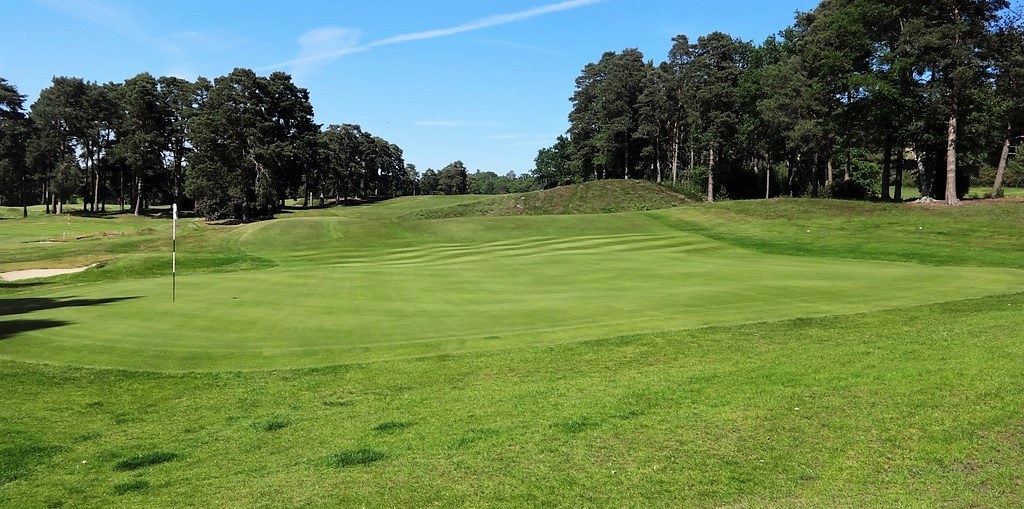
Another thorny distance hole of some 110 yards, the 11th can leave golfers stumbling and bumbling.
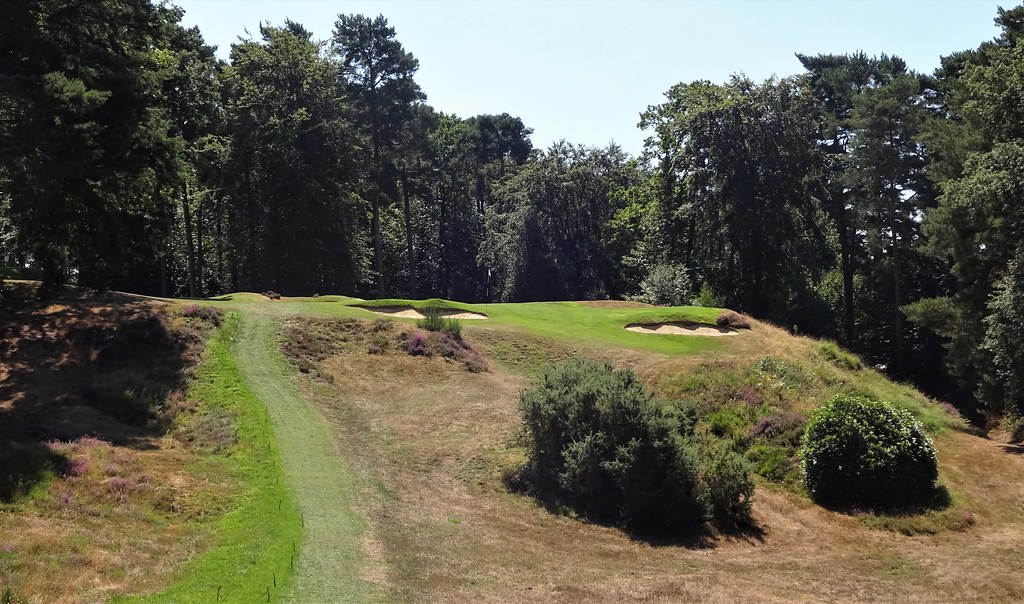
The plateau for the green site is actually quite large. It would be interesting to know why Colt chose not to use the entire feature in showcasing an unusual green for a short hole.
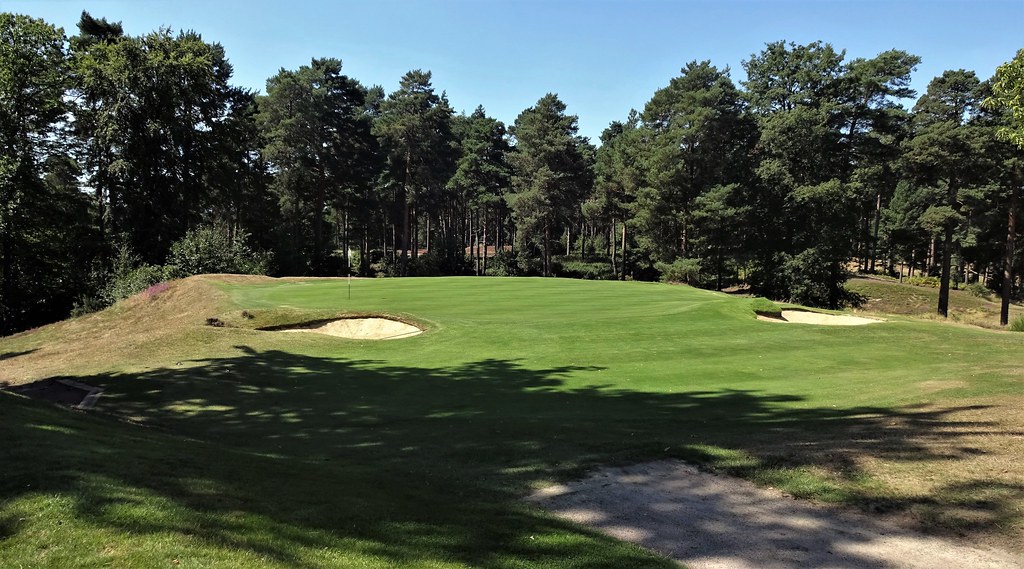
The 12th is another blind drive, but the splendor of the hole is soon exposed. There are two radically different tees which make the hole either straight or a legger right.
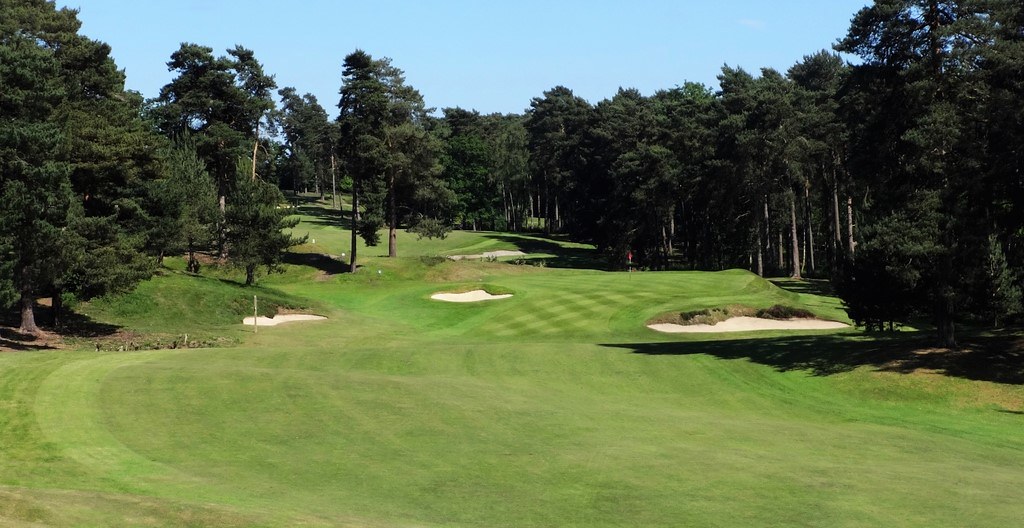
Another domed green disguised wonderfully by the front left bunker. Just look at how perfectly the green sits on the knob!
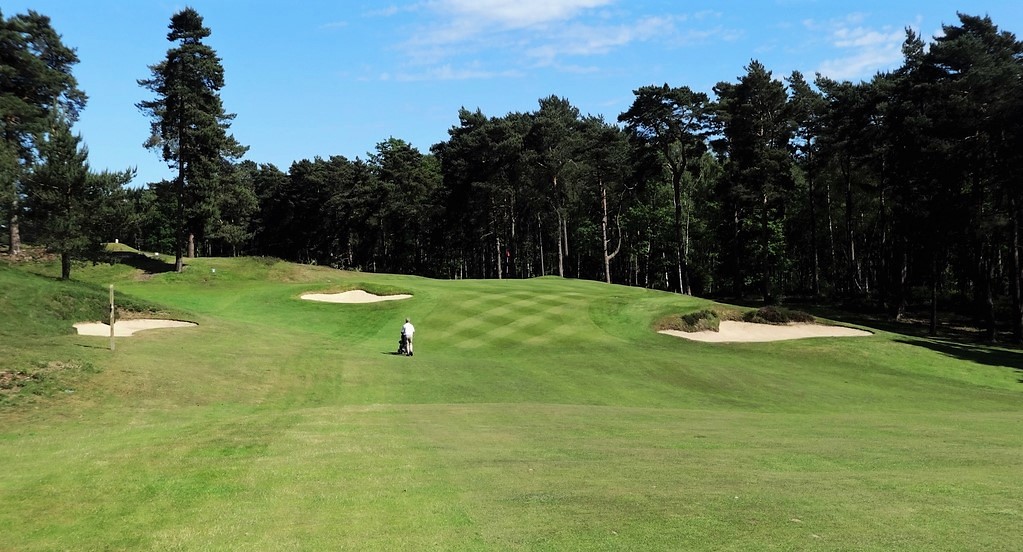
#13 is perhaps the most inviting tee shot on the course.
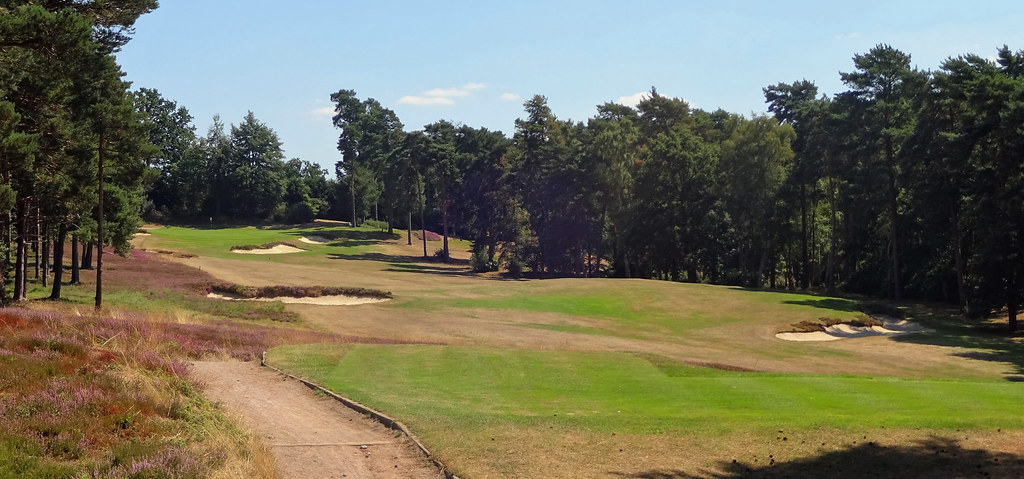
If this bunker was set diagonally the grass line wouldn't be nearly as stark.

Approaches such as this were a penchant of Colt. He seemed to slip in this concept of several bunkers following a diagonal line quite a bit. The left bunker was recently removed which has somewhat reduced the string of pearls effect.
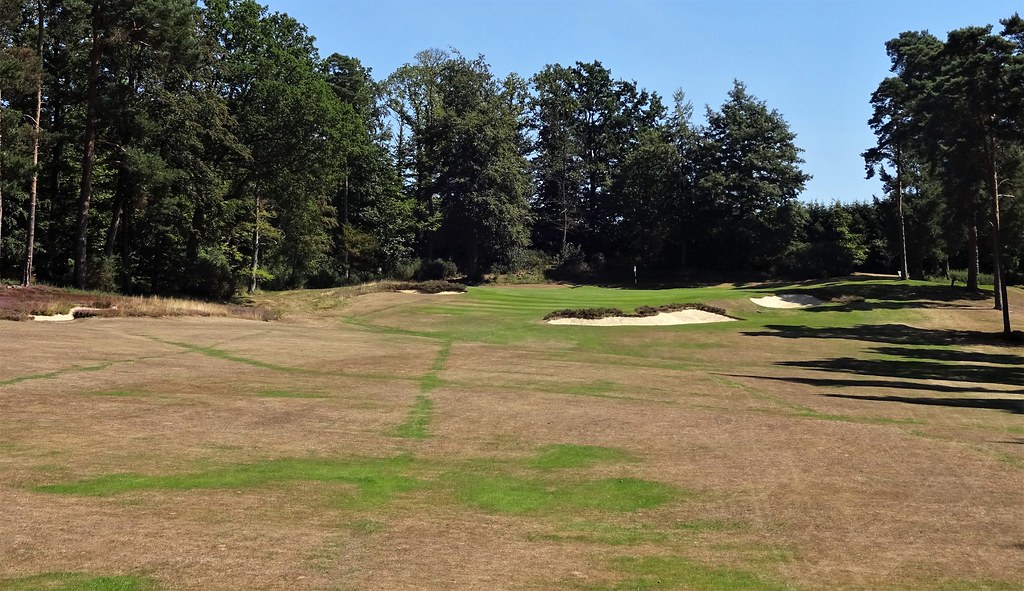
I think this is a new bunker...being flatter, its very much in the New Zealand style.
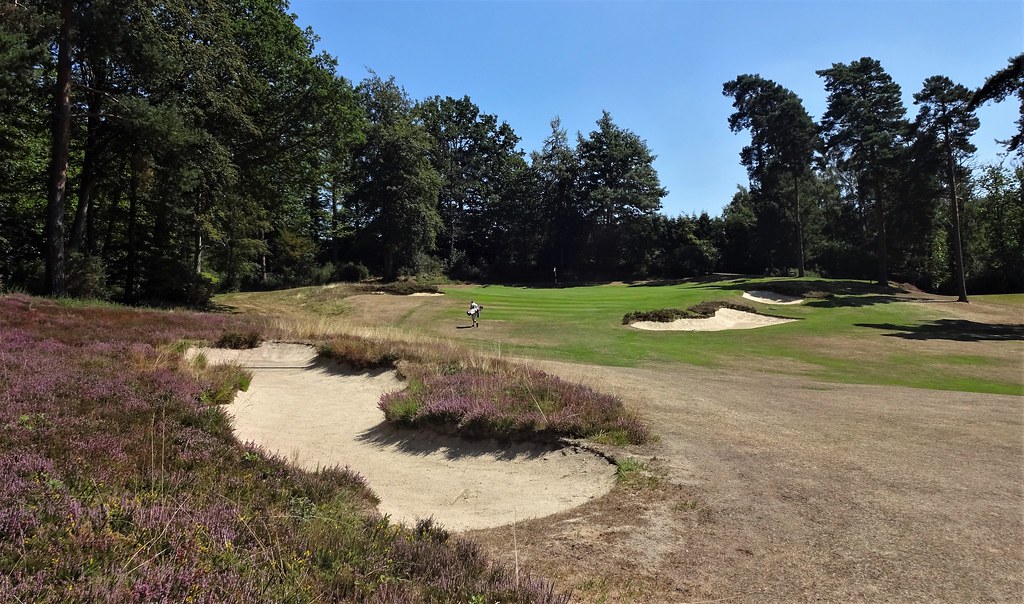
A rather odd short hole over water, it would seem that Colt tried his best not to get water properly into play on the 14th. All the same, this is a good hole because of the green. #15 is a straightaway par 5 with a slight drop and turn in the fairway out near the driving zone. Cleverly placed bunkers short left of the green attract aggressive shots which fail to stay on the correct line. Even if one bangs one between the sand, the contours will take the shot well left.
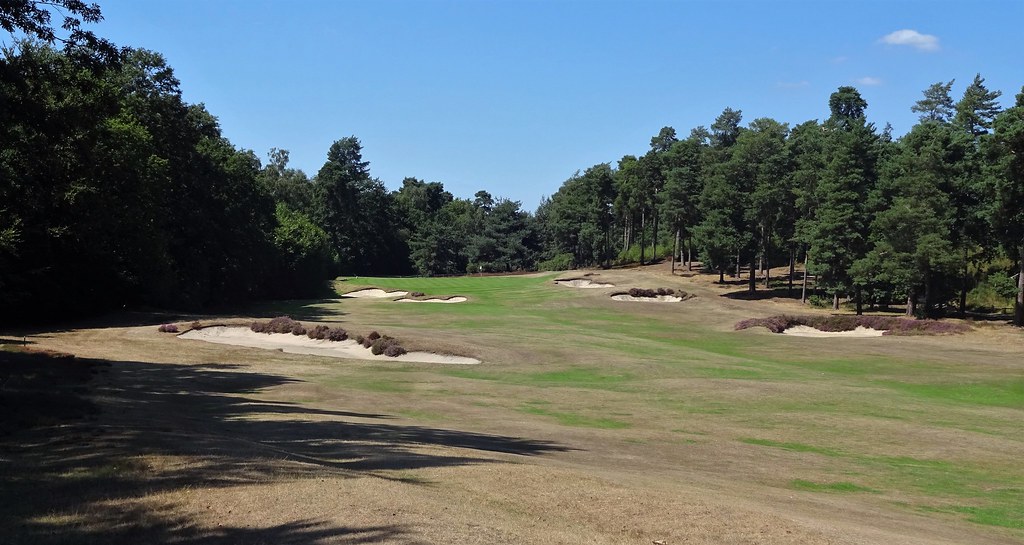
The tough 16th follows the same direction as 15 and features the string of pearls bunkering.
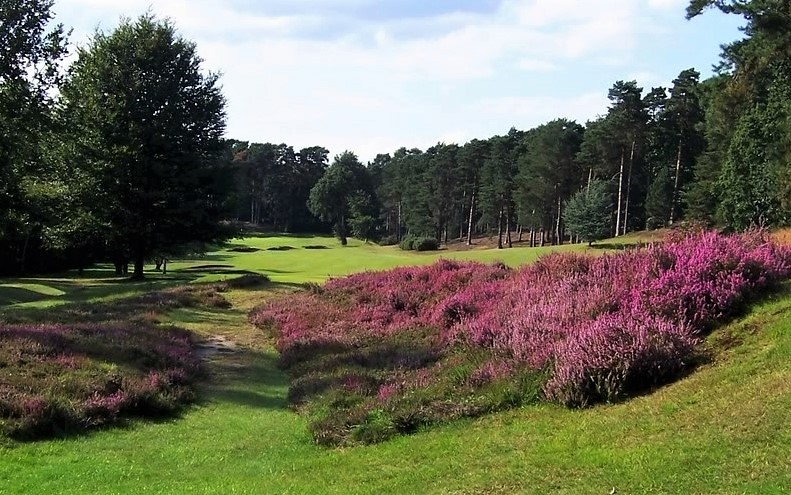
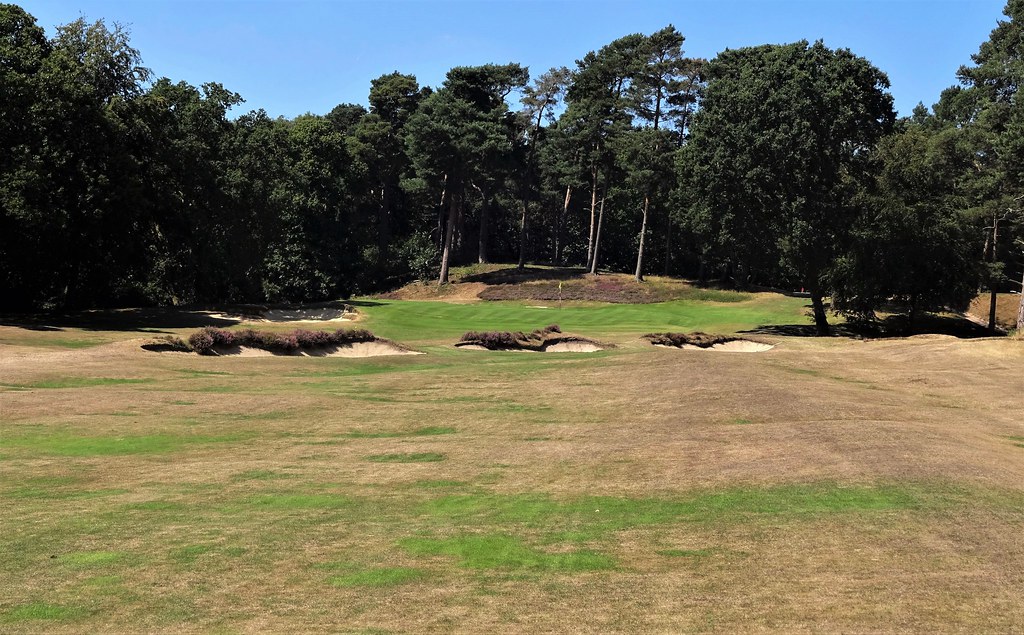
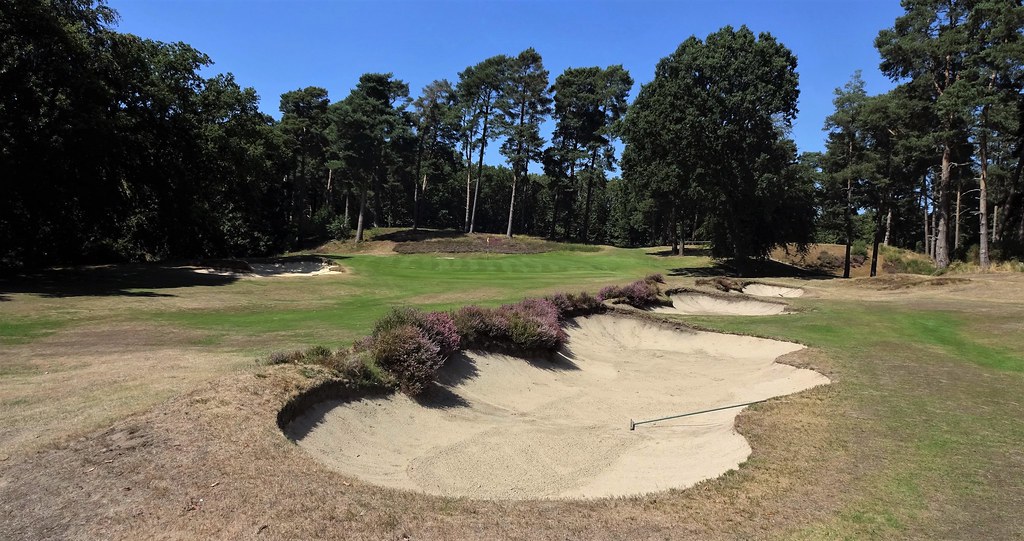
The great variety of the back nine continues with the 17th. Colt took advantage of the bold terrain incredibly well on the back nine and the use of the ridge is an example of this. Because of kicks left off the ridge, this fairway plays much narrower than it looks!
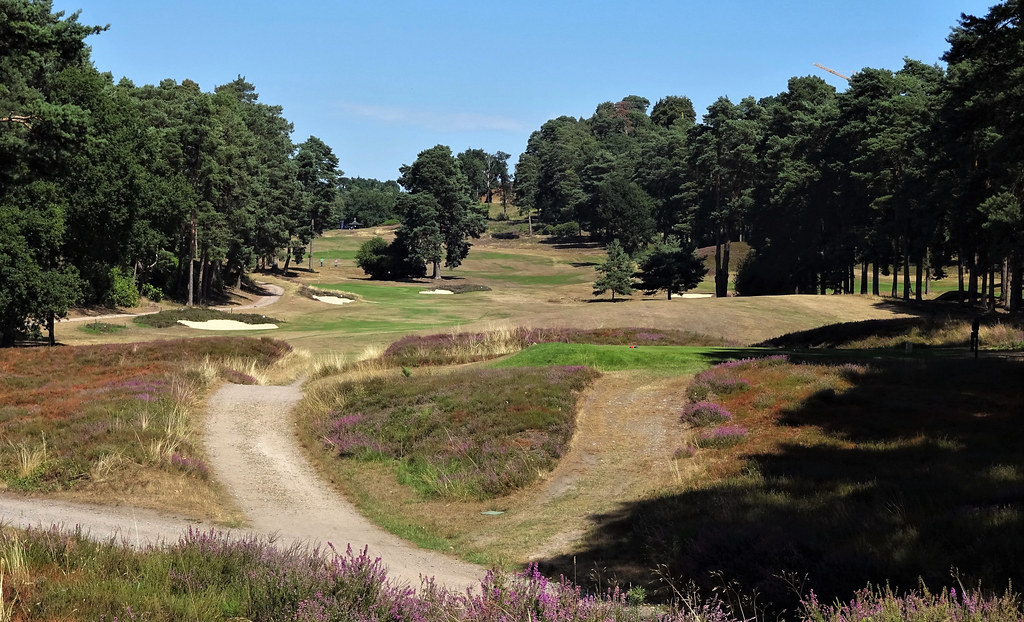
The approach.

This green has been extended to the left in the recent past. There is now a great hole location on the left just before the sudden drop.
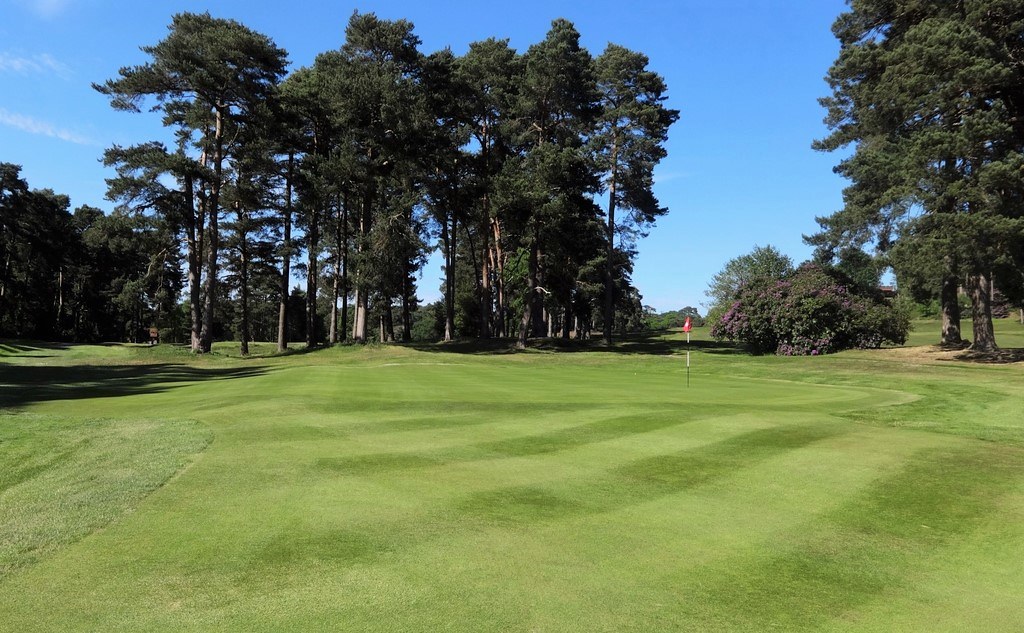
#18 is a fun finisher. Again, great use of the land to push tee shots away from the ideal approach angle.
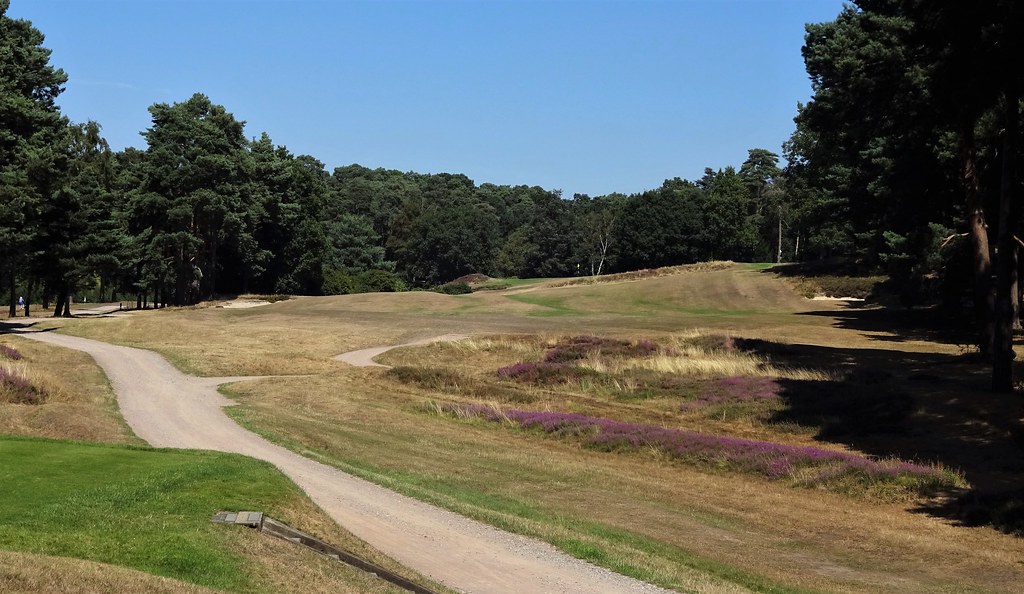
After turning the corner this cracking view of the green opens up.
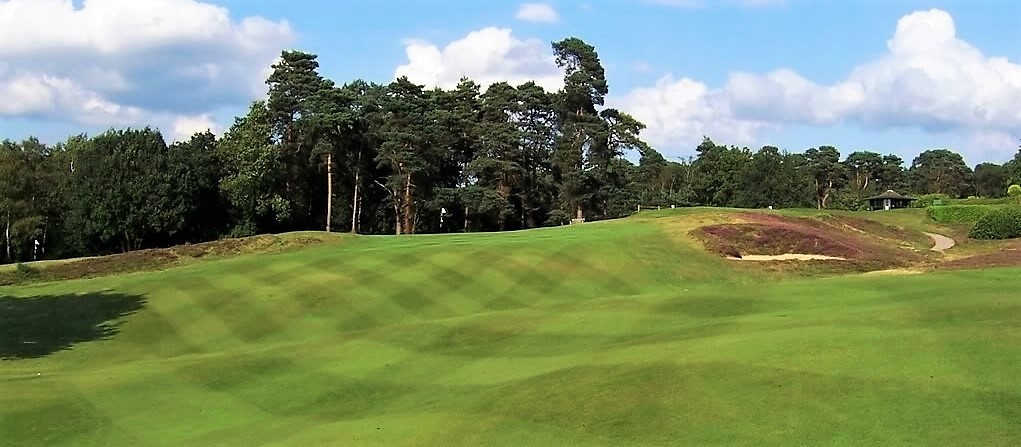
Not long, but depending on the lie and angle, this can be a tricky approach. This angle is common. Remember the horrible slope on the 18th green? The safe bail-out shot right leaves that nasty down-hill putt.
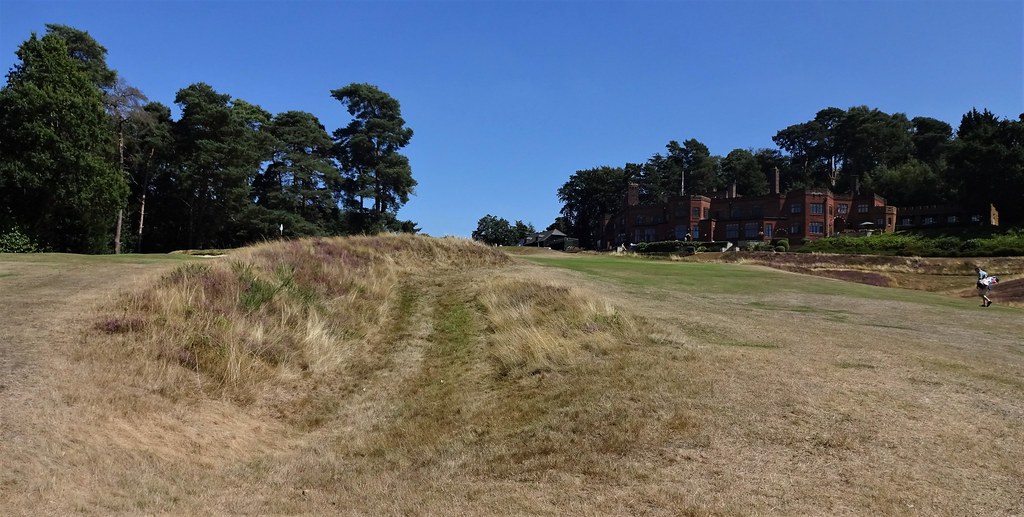
St Georges Hill is well worth a visit simply to see the par 4s...the variety is outstanding. The great use of the topography sets off what is surely one of the best back nines in England which is kick started by the alarmingly excellent 10th. Finally, the appropriate width of the course and well maintained tree areas ensures the design can be fully enjoyed and appreciated. For those interested in history the house is worth strolling around. A standout feature is the uniquely displayed "board" winners on corner columns. Anybody going to London should seriously consider St Georges Hill as one of the first ports of call. 1* 2018
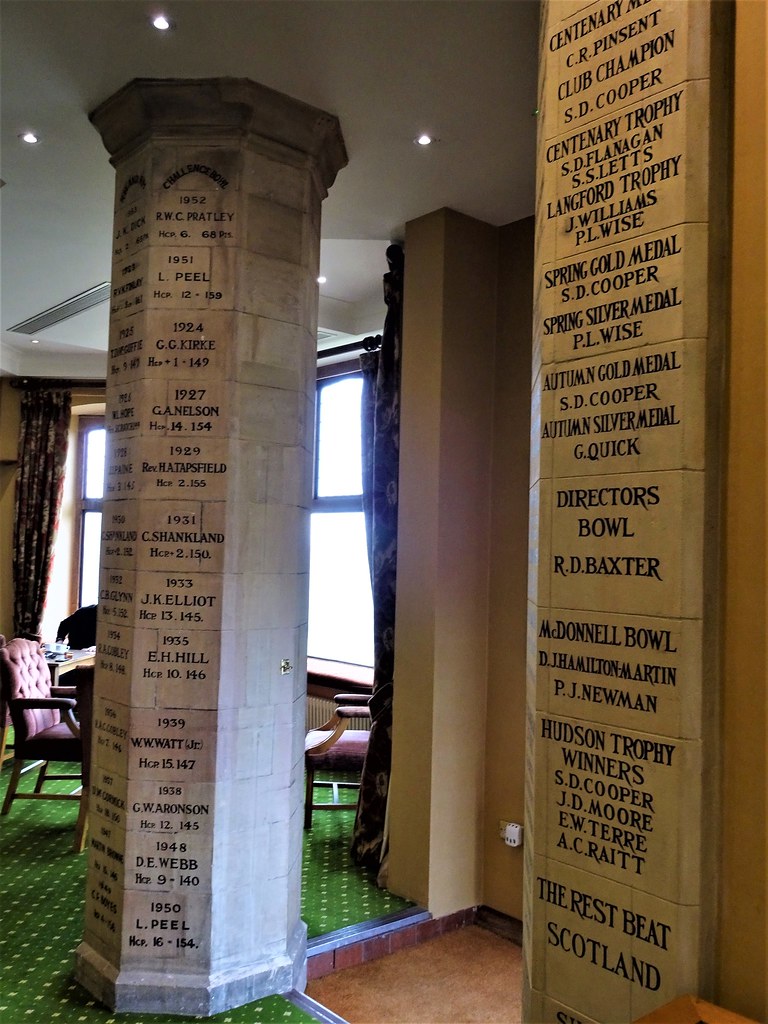
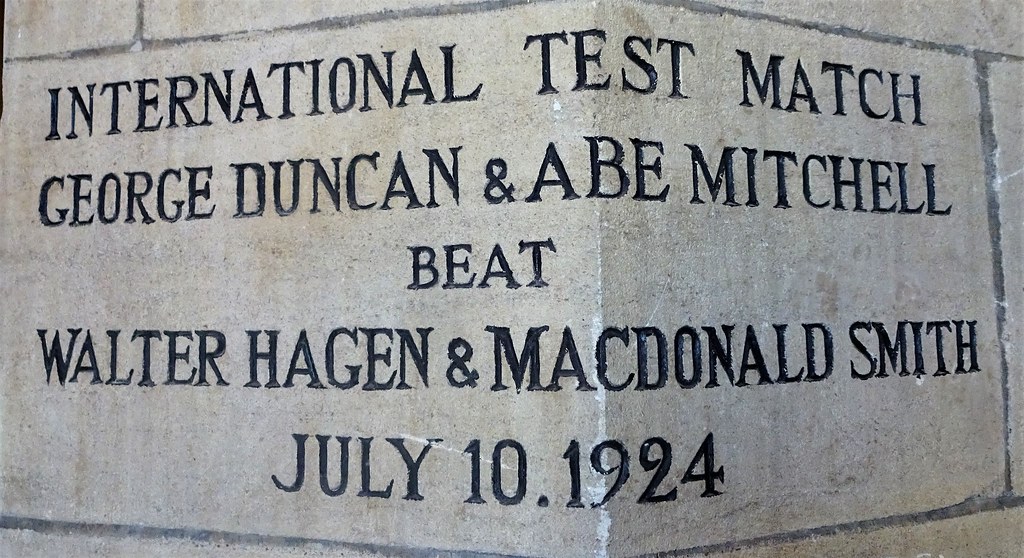
Ciao